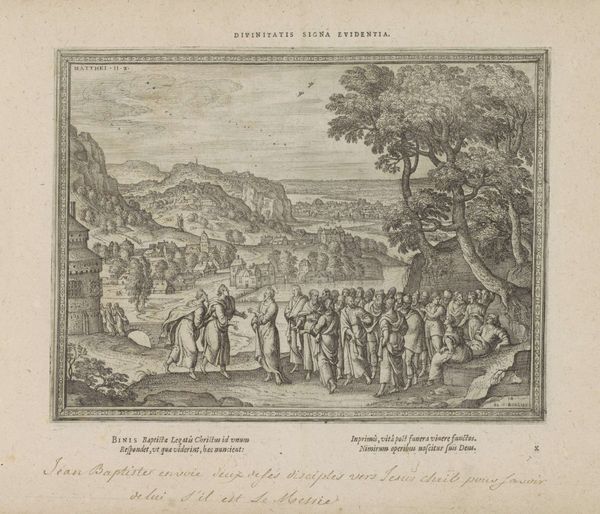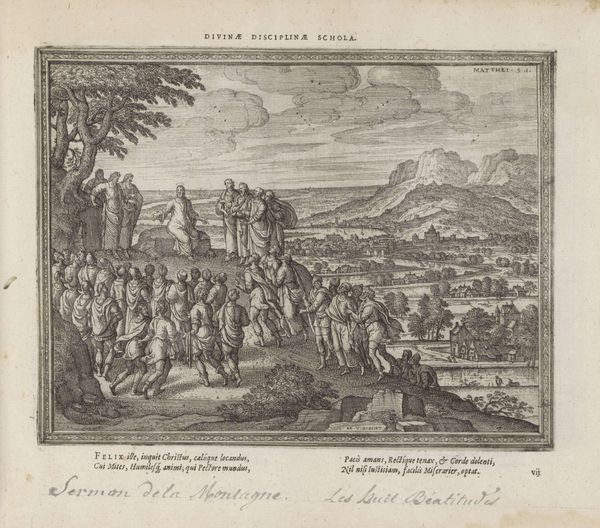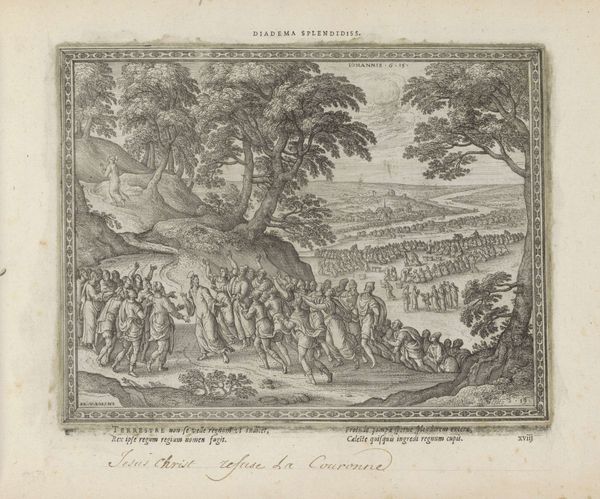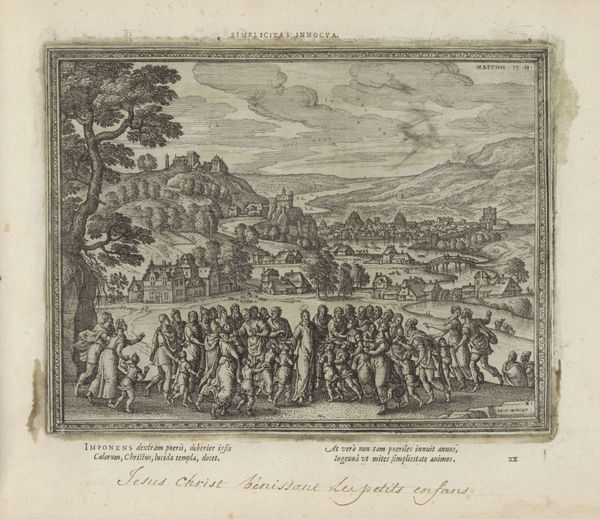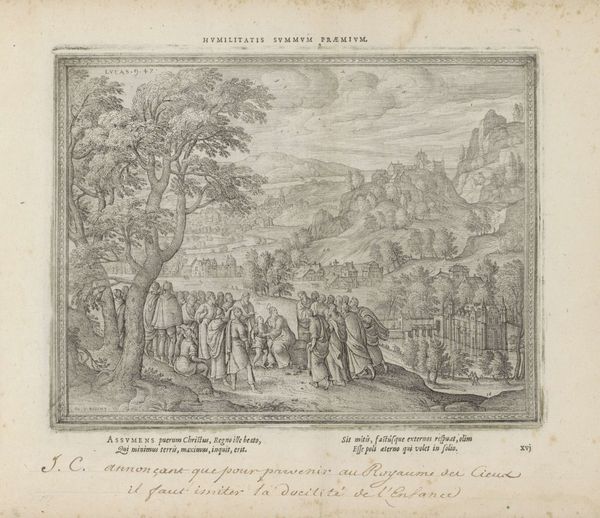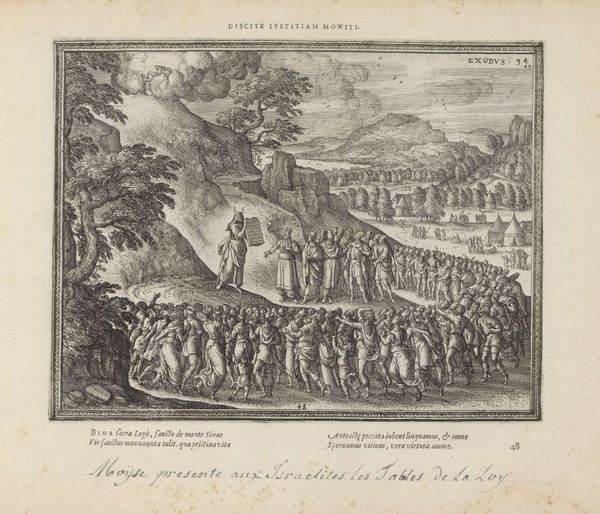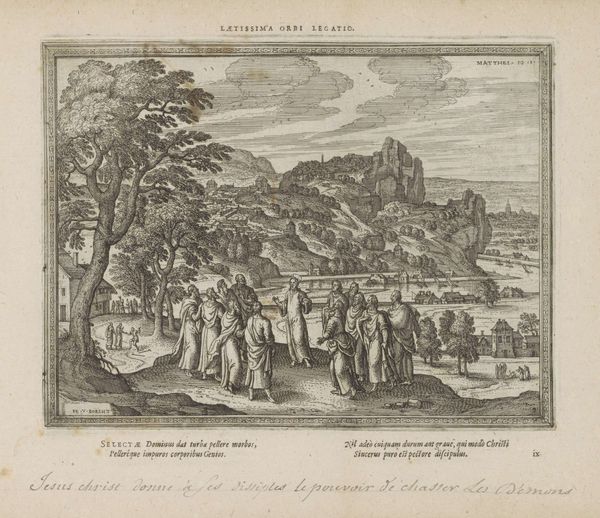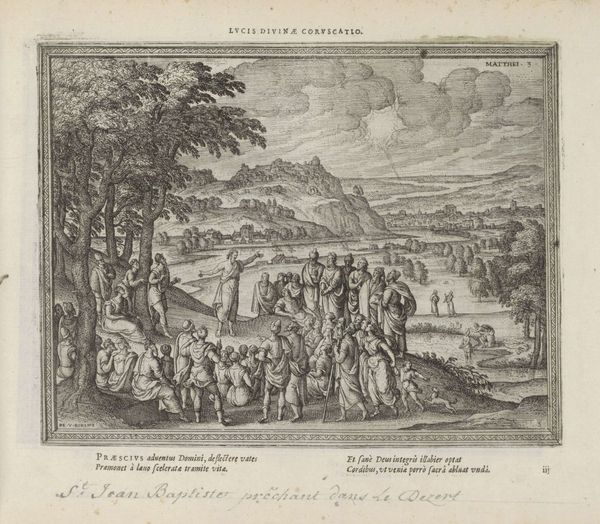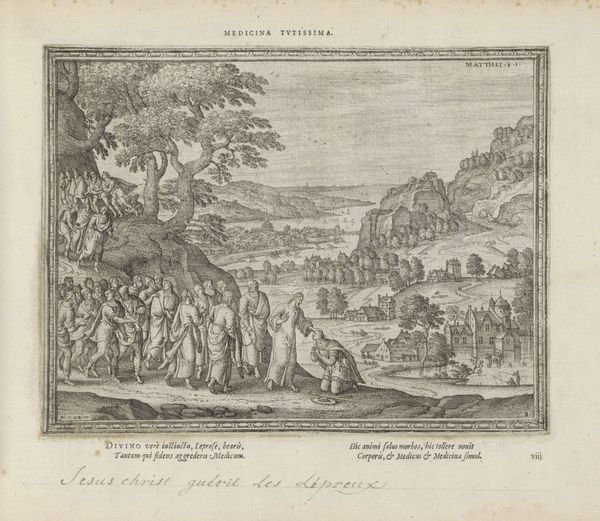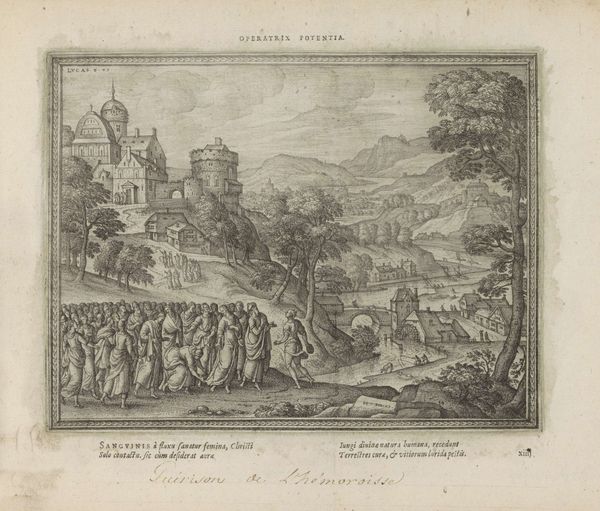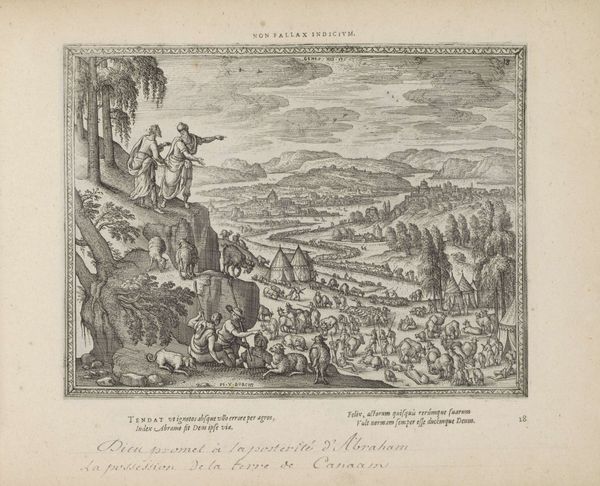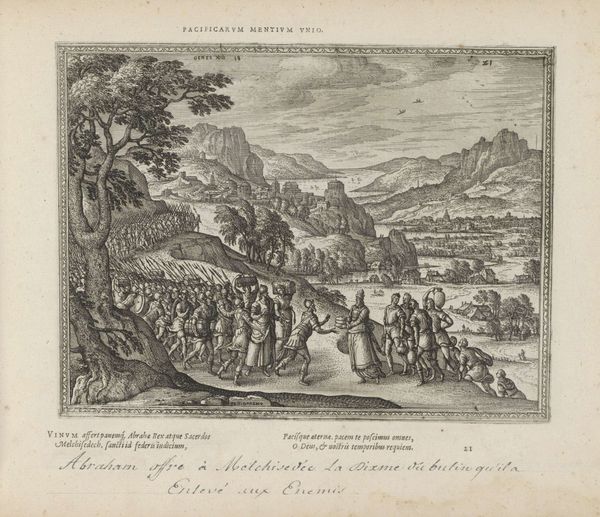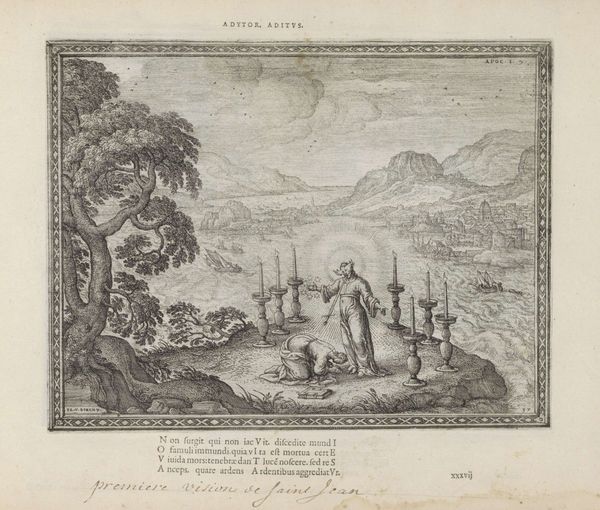
Landschap met de gelijkenis van de Barmhartige Samaritaan 1582 - 1613
0:00
0:00
pietervanderiborcht
Rijksmuseum
print, engraving
#
narrative-art
# print
#
landscape
#
figuration
#
history-painting
#
northern-renaissance
#
engraving
Dimensions: height 186 mm, width 245 mm
Copyright: Rijks Museum: Open Domain
This print, made around 1600 by Pieter van der Borcht, is rendered in ink on paper using the etching technique. This method involves coating a metal plate with wax, scratching a design into it, and then immersing it in acid, which bites into the exposed lines. The fine, precise lines of the etching allow for intricate detail, evident in the landscape and the numerous figures illustrating the parable of the Good Samaritan. But why etching, and why printmaking at all? Well, prints were the mass media of their day. Unlike painting or sculpture, printmaking enabled images to be reproduced and distributed widely, making them accessible to a broad audience. Here, the artist’s labor is multiplied through the printing process, allowing the image and its message to circulate far beyond the artist’s studio. Consider how this work highlights the social dimensions of art. The very act of making and distributing prints speaks to a desire for wider communication and impact. So, next time you see a print, think not only about its aesthetic qualities, but also about its role in the social landscape of its time.
Comments
No comments
Be the first to comment and join the conversation on the ultimate creative platform.
